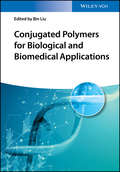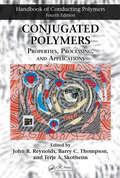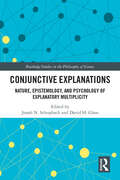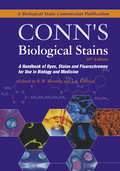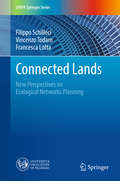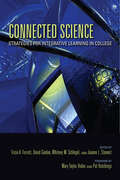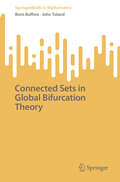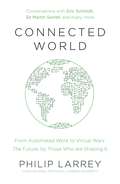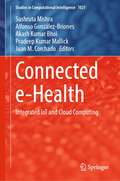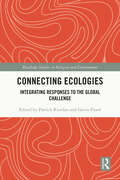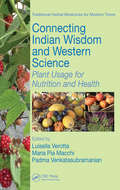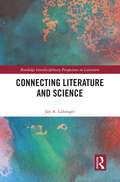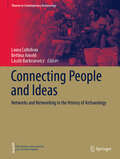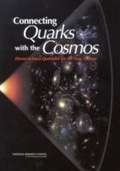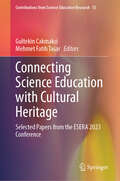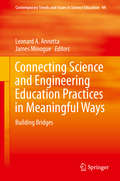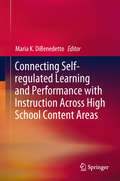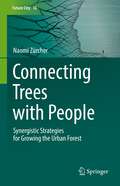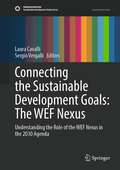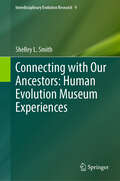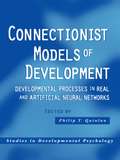- Table View
- List View
Conjugated Polymers for Biological and Biomedical Applications
by Bin LiuThis first book to specifically focus on applications of conjugated polymers in the fields of biology and biomedicine covers materials science, physical principles, and nanotechnology. The editor and authors, all pioneers and experts with extensive research experience in the field, firstly introduce the synthesis and optical properties of various conjugated polymers, highlighting how to make organic soluble polymers compatible with the aqueous environment. This is followed by the application of these materials in optical sensing and imaging as well as the emerging applications in image-guided therapy and in the treatment of neurodegenerative diseases. The result is a consolidated overview for polymer chemists, materials scientists, biochemists, biotechnologists, and bioengineers.
Conjugated Polymers: Properties, Processing, and Applications (Polymer Chemistry Ser. #Volume 9)
by John R. Reynolds Barry C. Thompson Terje A. SkotheimThis book covers properties, processing, and applications of conducting polymers. It discusses properties and characterization, including photophysics and transport. It then moves to processing and morphology of conducting polymers, covering such topics as printing, thermal processing, morphology evolution, conducting polymer composites, thin films
Conjunctive Explanations: The Nature, Epistemology, and Psychology of Explanatory Multiplicity (Routledge Studies in the Philosophy of Science)
by David H. Glass Jonah N. SchupbachPhilosophers and psychologists are increasingly investigating the conditions under which multiple explanations are better in conjunction than they are individually. This book brings together leading scholars to provide an interdisciplinary and unified discussion of such “conjunctive explanations.” The book starts with an introductory chapter expounding the notion of conjunctive explanation and motivating a multifaceted approach to its study. The remaining chapters are divided into three parts. Part I includes chapters on “The Nature of Conjunctive Explanations.” Each chapter illustrates distinct ways in which explanatory multiplicity is motivated by a careful study of the nature and concept of explanation. The second part (“Reasoning About Conjunctive Explanations”) includes chapters on the epistemology and logic of conjunctive explanations. Here the contributors propose and evaluate various norms for reasoning correctly about and to conjunctive explanations. Part III concerns “The Psychology of Conjunctive Explanations,” with contributions discussing conditions under which humans entertain and hold multiple explanations of single explananda simultaneously and the cognitive limitations and capacities for doing so. Conjunctive Explanations will be of interest to researchers and advanced students working on explanation in philosophy of science, epistemology, philosophical logic, and cognitive psychology.
Conn's Biological Stains: A Handbook of Dyes, Stains and Fluorochromes for Use in Biology and Medicine
by Richard W. Horobin and John A. KiernanPublished on behalf of the Biological Stain CommissionFor 75 years Conn's Biological Stains has been a standard reference for all those who used dyes and colorants in the biological and medical sciences. This long awaited tenth edition appears 25 years after R.D. Lillie's ninth and has been completely rewritten to reflect the increase in range of uses. Although the staining of microscopical preparations continues to expand the uses of dyes and fluorochromes now extend far beyond this traditional application.This book provides the first critical overview of the whole range of low molecular weight fluorescent probes, outside the catalogue literature. The first ten chapters are essays, by leading experts, on the important aspects of colorants and their uses. Most of the remainder of the book consists of descriptions by Dr Horobin of the properties and recent applications of hundreds of individual compounds, in about twenty chemical classes. The last chapter reviews the procedures employed at the Biological Stain Commission's laboratory to assay and test dyes and certify them as suitable for their intended applications.
Connected Lands: New Perspectives on Ecological Networks Planning (UNIPA Springer Series)
by Filippo Schilleci Vincenzo Todaro Francesca LottaThis book explores and outlines the reference theoretical basis of ecological networks within the international debate, focusing on how protected areas should no longer be considered as the sum of different components but rather as a network. The various European, transnational and national models of ecological networks/connections are analyzed on the basis of a detailed, updated study of relevant documents. The complex picture that emerges shows a wide range of reticular-ecological models within European plans and programs, but also many non-integrated experiences. The book subsequently examines the regulation of ecological networks/connections within planning instruments, explaining the critical points and referring to different ecological network models and specific local realities. Lastly, the book addresses two Italian case studies regarding the different normative and planning frameworks, both at a national and regional level, and demonstrating not only how ecological networks/connections can be structured within plans, but also how these networks/connections represent the core element of territory development and preservation. As such, it provides an essential tool for containing habitat fragmentation, offering a new perspective that integrates theoretical approaches and methods with planning models and the lessons learned from local applications.
Connected Mathematics: Stretching and Shrinking (Similarity)
by Glenda Lappan James T. Fey William M. Fitzgerald Susan N. Friel Elizabeth Difanis PhillipsStretching and Shrinking explores the geometry concept of similarity.
Connected Medical Devices: Integrating Patient Care Data in Healthcare Systems (HIMSS Book Series)
by John ZaleskiThis book explores how medical device integration (MDI) supports quality patient care and better clinical outcomes by reducing clinical documentation transcription errors, improving data accuracy and density within clinical records and ensuring the complete capture of medical device information on patients. It begins with a comprehensive overview of the types of medical devices in use and the ways in which those devices interact, then examines factors such as interoperability standards, patient identification, clinical alerts and regulatory and security considerations.
Connected Science: Strategies for Integrative Learning in College (Scholarship Of Teaching And Learning Ser.)
by Tricia A. Ferrett, David R. Geelan, Whitney M. Schlegel, and Joanne L. StewartInformed by the scholarship of teaching and learning (SOTL), Connected Science presents a new approach to college science education for the 21st century. This interdisciplinary approach stresses integrative learning and pedagogies that engage students through open-ended inquiry, compelling real-world questions, and data-rich experiences. Faculty from a variety of disciplines and institutions present case studies based on research in the classroom, offering insights into student learning goals and best practices in curriculum design. Synthetic chapters bring together themes from the case studies, present an overview of the connected science approach, and identify strategies and future challenges to help move this work forward.
Connected Sets in Global Bifurcation Theory (SpringerBriefs in Mathematics)
by John Toland Boris BuffoniThis book explores the topological properties of connected and path-connected solution sets for nonlinear equations in Banach spaces, focusing on the distinction between these concepts. Building on Rabinowitz's dichotomy and classical results on Peano continua, the authors introduce "congestion points"—where connected sets fail to be weakly locally connected—and examine the extent to which their presence is compatible with path-connectedness. Through rigorous analysis and examples, the book provides new insights into global bifurcations. Structured into seven chapters, the book begins with an introduction to global bifurcation theory and foundational concepts in set theory and metric spaces. Subsequent chapters delve into connectedness, local connectedness, and congestion points, culminating in the construction of intricate examples that highlight the complexities of solution sets. The authors' careful selection of material and fluent writing style make this work a valuable resource for PhD students and experts in functional analysis and bifurcation theory.
Connected World: From Automated Work to Virtual Wars: The Future, By Those Who Are Shaping It
by Father Philip LarreyThe world as we know it is changing. Driverless cars, drone deliveries and autonomous weapon systems are no longer the stuff of science fiction.But what's next for technology and business, and how will it impact our society?In Connected World, Philip Larrey of the Pontifical Lateran University explores the consequences of the new digital age in conversation with leaders including Sir Martin Sorrell, CEO of WPP, Eric Schmidt, CEO of Google's parent company Alphabet, and Maurice Lévy, CEO of Publicis Groupe.Ranging from the death of privacy to the rise of artificial intelligence, Connected World asks the existential questions which will come to define our age.
Connected e-Health: Integrated IoT and Cloud Computing (Studies in Computational Intelligence #1021)
by Juan M. Corchado Akash Kumar Bhoi Pradeep Kumar Mallick Alfonso González-Briones Sushruta MishraWith rise of smart medical sensors, cloud computing and the health care technologies, “connected health” is getting remarkable consideration everywhere. Recently, the Internet of Things (IoT) has brought the vision of a smarter world into reality. Cloud computing fits well in this scenario as it can provide high quality of clinical experience. Thus an IoT-cloud convergence can play a vital role in healthcare by offering better insight of heterogeneous healthcare content supporting quality care. It can also support powerful processing and storage facilities of huge data to provide automated decision making. This book aims to report quality research on recent advances towards IoT-Cloud convergence for smart healthcare, more specifically to the state-of-the-art approaches, design, development and innovative use of those convergence methods for providing insights into healthcare service demands. Students, researchers, and medical experts in the field of information technology, medicine, cloud computing, soft computing technologies, IoT and the related fields can benefit from this handbook in handling real-time challenges in healthcare. Current books are limited to focus either on soft computing algorithms or smart healthcare. Integration of smart and cloud computing models in healthcare resulting in connected health is explored in detail in this book.
Connecting Ecologies: Integrating Responses to the Global Challenge (Routledge Studies in Religion and Environment)
by Gavin Flood Patrick RiordanConnecting Ecologies focuses on the environmental aspects of Pope Francis’ encyclical Laudato Si’ and the challenge to care for our common home. It considers how best to devise and implement the new societal models needed to tackle the ecological problems facing the world today. The book addresses the need for and complexity of an integral ecology, one that looks not only at physical and biological processes but also allows for the contributions of theology, philosophy, spirituality, and psychology, including the implications for the human and social sciences. The contributions document four categories of resonances, resources, requirements, and responses evoked by a reading of Laudato Si’ and include consideration of other faith traditions. They reflect on how care for our common home motivates people in different places, cultures, and professions to cooperate for myriad goods in common. The volume is particularly relevant for scholars working in religious studies and theology with an interest in ecology, the environment, and the Anthropocene.
Connecting Indian Wisdom and Western Science: Plant Usage for Nutrition and Health (Traditional Herbal Medicines for Modern Times)
by Luisella Verotta Maria Pia Macchi Padma VenkatasubramanianA truly integrated collection of research, Connecting Indian Wisdom and Western Science: Plant Usage for Nutrition and Health compares Ayurvedic and Western conceptions of wellness, healthy lifestyle, and diet. Examining the phyto-pharmacological, phytochemical, clinical, ethnobotanical, sociocultural, and biomedical approaches to plant- and herb-b
Connecting Literature and Science (Routledge Interdisciplinary Perspectives on Literature)
by Jay A. LabingerThis book presents a case for engagement between the sciences and the humanities. The author, a professional chemist, seeks to demonstrate that the connections between those fields of intellectual activity are far more significant than anything that separates them. The book combines a historical survey of the relationships between science and literature with a number of case studies that examine specific scientific episodes—several drawn from the author’s own research—juxtaposed with a variety of literary works spanning a wide range of period and genre—Dante to detective fiction, War and Peace to White Teeth—to elicit their common themes. The work argues for an empirical, non-theory-based approach, one that is closely analogous to connectionist models of brain development and function, and that can appeal to general readers, as well as to literary scholars and practicing scientists, who are open to the idea that literature and science should not be compartmentalized.
Connecting Literature and Science (Routledge Interdisciplinary Perspectives on Literature)
by Jay A. LabingerThis book presents a case for engagement between the sciences and the humanities. The author, a professional chemist, seeks to demonstrate that the connections between those fields of intellectual activity are far more significant than anything that separates them. The book combines a historical survey of the relationships between science and literature with a number of case studies that examine specific scientific episodes—several drawn from the author’s own research—juxtaposed with a variety of literary works spanning a wide range of period and genre—Dante to detective fiction, War and Peace to White Teeth—to elicit their common themes. The work argues for an empirical, non-theory-based approach, one that is closely analogous to connectionist models of brain development and function, and that can appeal to general readers, as well as to literary scholars and practicing scientists, who are open to the idea that literature and science should not be compartmentalized.
Connecting People and Ideas: Networks and Networking in the History of Archaeology (Themes in Contemporary Archaeology)
by László Bartosiewicz Bettina Arnold Laura ColtofeanThis book presents new research into social networks and the various networking modes that formed during the history of archaeology in distinct geographical settings in Europe, North America, and South Asia in the nineteenth and twentieth centuries. The diverse range of international experts in this edited collection demonstrate that networks can be found everywhere in archaeology, making it a highly interconnected research field. Using a wide array of examples from diverse geopolitical, cultural, and social contexts, the volume reveals how essential social networks and networking have been to the development of archaeology; to the production, transfer, exchange, and dissemination of archaeological and cross-disciplinary knowledge; and to the formation, upward mobility, barrier transcendence, research, and association of archaeological practitioners. The book is of interest to students and scholars of history of archaeology, history of science, museum studies and interdisciplinary studies.
Connecting Quarks with the Cosmos: Eleven Science Questions for the New Century
by Committee on the Physics of the UniverseAdvances made by physicists in understanding matter, space, and time and by astronomers in understanding the universe as a whole have closely intertwined the question being asked about the universe at its two extremes--the very large and the very small. This report identifies 11 key questions that have a good chance to be answered in the next decade. It urges that a new research strategy be created that brings to bear the techniques of both astronomy and sub-atomic physics in a cross-disciplinary way to address these questions. The report presents seven recommendations to facilitate the necessary research and development coordination. These recommendations identify key priorities for future scientific projects critical for realizing these scientific opportunities.
Connecting Science Education with Cultural Heritage: Selected Papers from the ESERA 2023 Conference (Contributions from Science Education Research #15)
by Gultekin Cakmakci Mehmet Fatih TasarThis edited volume presents groundbreaking research in science education, focusing on the intersection of science and cultural heritage. Showcasing 23 high-quality studies, it draws from presentations at the 15th Biennial ESERA Conference held in Cappadocia, Türkiye, organized by Hacettepe University, Gazi University, and Nevşehir Hacı Bektaş Veli University. Under the theme "Connecting Science Education with Cultural Heritage," the chapters offer fresh perspectives on advancing science education literature from diverse viewpoints. With contributions spanning continents, this book delivers an exceptional collection of international studies featuring original and rigorous methodologies. Scholars and researchers in science education will find this compilation an invaluable resource, making it a vital addition to academic libraries worldwide.
Connecting Science and Engineering Education Practices in Meaningful Ways: Building Bridges (Contemporary Trends and Issues in Science Education #44)
by Leonard A. Annetta James MinogueThe need for a scientifically literate citizenry, one that is able to think critically and engage productively in the engineering design process, has never been greater. By raising engineering design to the same level as scientific inquiry the Next Generation Science Standards' (NGSS) have signaled their commitment to the integration of engineering design into the fabric of science education. This call has raised many critical questions. . . How well do these new standards represent what actually engineers do? Where do the deep connections among science and engineering practices lie? To what extent can (or even should) science and engineering practices co-exist in formal and informal educational spaces? Which of the core science concepts are best to leverage in the pursuit of coherent and compelling integration of engineering practices? What science important content may be pushed aside? This book, tackles many of these tough questions head on. All of the contributing authors consider the same core question: Given the rapidly changing landscape of science education, including the elevated status of engineering design, what are the best approaches to the effective integration of the science and engineering practices? They answered with rich descriptions of pioneering approaches, critical insights, and useful practical examples of how embodying a culture of interdisciplinarity and innovation can fuel the development of a scientifically literate citizenry . This collection of work builds traversable bridges across diverse research communities and begins to break down long standing disciplinary silos that have historically often hamstrung well-meaning efforts to bring research and practice from science and engineering together in meaningful and lasting ways.
Connecting Self-regulated Learning and Performance with Instruction Across High School Content Areas
by Maria K. DiBenedettoThis book shows how principles of self-regulated learning are being implemented in secondary classrooms. The 14 chapters are theoretically driven and supported by empirical research and address all common high school content areas. The book comprises 29 lesson plans in English language arts, natural and physical sciences, social studies, mathematics, foreign language, art, music, health, and physical education. Additionally, the chapters address students with special needs, technology, and homework.Each chapter begins with one or more lesson plans written by master teachers, followed by narratives explaining how the lesson plans were implemented. The chapters conclude with an analysis written by expert researchers of the self-regulated learning elements in the lessons. Each lesson and each analysis incorporate relevant educational standards for that area. Different types of high schools in several states serve as venues.This powerful new book edited by Maria K. DiBenedetto provides a unique and invaluable resource for both secondary teachers and researchers committed to supporting adolescents in the development of academic self-regulation. Each chapter is jointly written by teachers who provide a wealth of materials, including lesson plans, and researchers who situate these lesson plans and academic self-regulation goals within the larger work on self-regulation. The topics covered are far broader than any other book I have seen in terms of developing academic self-regulation, covering over a dozen content areas, including literacy, mathematics, social studies, the sciences, and the arts. Teachers and scholars alike will find this book a must read.Karen Harris, EdD, Arizona State UniversityA practical and magnificent blend of educational research and application. This book goes beyond presenting the findings of research on self regulation by connecting detailed strategies that align with the standards to the research. DiBenedetto et al. clearly illustrate how to develop self regulated learners in the classroom. A refreshing must read for all secondary educators and educational researchers seeking to be well grounded in education research and practical application techniques. Heather Brookman, PhD, Fusion Academy- Park Avenue Self-regulated learning is a research-based process by which teachers help students realize their own role in the learning process. Connecting Self-Regulated Learning and Performance with Instruction Across High School Content Areas consists of model teachers’ lessons and analyses by prominent educational psychologists in the field of self-regulated learning. The book provides teachers with the tools needed to increase students’ awareness of learning and inspires all educators to use self-regulated learning to promote engagement, motivation, and achievement in their students. The book also provides administrators with the principles needed to infuse evidenced based self-regulated learning into their curriculum and instruction. I highly recommend the book!Marty Richburg, Northside High School
Connecting Trees with People: Synergistic Strategies for Growing the Urban Forest (Future City #16)
by Naomi ZürcherWritten from the perspective of an urban forester and certified arborist, the reader will have a basic understanding of what makes a tree a tree in context to the philosophical and cultural underpinnings of Urban and Community Forestry, and learn how to implement model, time-tested global green practices and initiatives derived from citizen science.
Connecting the Drops: A Citizens' Guide to Protecting Water Resources
by Karen Schneller-McdonaldThe need for improved water resource protection, beginning with grassroots action, is urgent. The water we use depends on networks of wetlands, streams, and watersheds. Land-use activities, however, are changing these natural systems. Often these changes result in ecological damage, flooding, water pollution, and reduced water supply. We need a healthy environment that sustains our personal and community health; we also need vibrant and sustainable economic development that does not destroy the benefits we derive from nature. Our ability to accomplish both depends on how well we can "connect the drops."In this book, Karen Schneller-McDonald presents the basics of water resource protection: ecology and watershed science; techniques for evaluating environmental impacts; obstacles to protection and how to overcome them; and tips for protection strategies that maximize chances for success. Schneller-McDonald makes clear the important connections among natural cycles, watersheds, and ecosystems; the benefits they provide; and how specific development activities affect water quality and supply.The methods described in Connecting the Drops have broad application in diverse geographic locations. The environmental details may differ, but the methods are the same. For water resource managers and concerned citizens alike, Connecting the Drops helps readers interpret scientific information and contextualize news media reports and industry ads--ultimately offering "how to" guidance for developing resource protection strategies.
Connecting the Sustainable Development Goals: Understanding the Role of the WEF Nexus in the 2030 Agenda (Sustainable Development Goals Series)
by Laura Cavalli Sergio VergalliThis contributed volume offers a state-of-the-art, holistic overview of the employment of a Water-Energy-Food (WEF) Nexus approach to implement the seventeen United Nations Sustainable Development Goals (SDGs), with a geographical focus on applications in different African regions. The book is divided into three sections, each composed of several chapters contributed by experts in their respective fields. Section I introduces the WEF Nexus and its role in the achievement of the 2030 Agenda and the SDGs. It highlights the attempt to connect different spheres of sustainability thanks to the Nexus, taking advantage of the existing interlinkages and interconnections among the Goals. Section II proposes a multi-scale and multi-stakeholder approach to various aspects of the Nexus and reviews existing quantitative tools. This section focuses on the issue of resource control and development aims and spotlights how Nexus dynamics influence the achievement of the SDGs as a whole. Section III applies the WEF Nexus to different African regions, which are balancing a rising population and an economic boom with severe vulnerability in the face of climate change.
Connecting with Our Ancestors: Human Evolution Museum Experiences (Interdisciplinary Evolution Research #9)
by Shelley L. SmithThis book combines documentation and analysis of the contents of exhibits in 12 museums (Part 1) with interviews with experts involved in the creation of exhibits (Part 2) to explore variation in human evolution exhibits. To be successful, museum exhibits must make a personal connection with visitors, inspiring them to learn more. Human evolution exhibits thus need contemporary relevance. It is crucial to find ways to bind our deep past to our lives today. Presenting our story, and our collective history, some human evolution exhibits reach an audience of millions each year. An understanding of evolution is fundamental to modern biology, and a lack of knowledge of basic principles has practical consequences, including impairing reception of health messages. The goal of the volume is to stimulate discussion of how the presentation of evolution, and in particular human evolution, can be improved, contributing to scientific literacy and engagement with evolutionary science. To enhance relevance to a broader public, the author argues that incorporation of evolutionary medicine and clearer explanations of ancestry and human biological variation are needed. The surveyed museums include four in Texas, the author’s home state, seven additional renowned U.S. museums, and the Natural History Museum in London. Some of the 35 interviewees are prominent academic researchers; other contribute their expertise in design, art, and education. Topics discussed include exhibit content and changing exhibits, the ideal vs. reality in exhibit creation, self-assessments of exhibits, education and “edutainment,” and exhibit content intersections with religion, politics, and the history of representations of race / human biological variation. A bibliographic essay, appendices, and text boxes provide additional information for readers desiring more in-depth study. This volume is of interest to a wide range of readers in anthropology, museum studies, and science communication.
Connectionist Models of Development: Developmental Processes in Real and Artificial Neural Networks (Studies in Developmental Psychology)
by Philip T. QuinlanConnectionist Models of Development is an edited collection of essays on the current work concerning connectionist or neural network models of human development. The brain comprises millions of nerve cells that share myriad connections, and this book looks at how human development in these systems is typically characterised as adaptive changes to the strengths of these connections. The traditional accounts of connectionist learning, based on adaptive changes to weighted connections, are explored alongside the dynamic accounts in which networks generate their own structures as learning proceeds.Unlike most connectionist accounts of psychological processes which deal with the fully-mature system, this text brings to the fore a discussion of developmental processes. To investigate human cognitive and perceptual development, connectionist models of learning and representation are adopted alongside various aspects of language and knowledge acquisition. There are sections on artificial intelligence and how computer programs have been designed to mimic the development processes, as well as chapters which describe what is currently known about how real brains develop.This book is a much-needed addition to the existing literature on connectionist development as it includes up-to-date examples of research on current controversies in the field as well as new features such as genetic connectionism and biological theories of the brain. It will be invaluable to academic researchers, post-graduates and undergraduates in developmental psychology and those researching connectionist/neural networks as well as those in related fields such as psycholinguistics.
